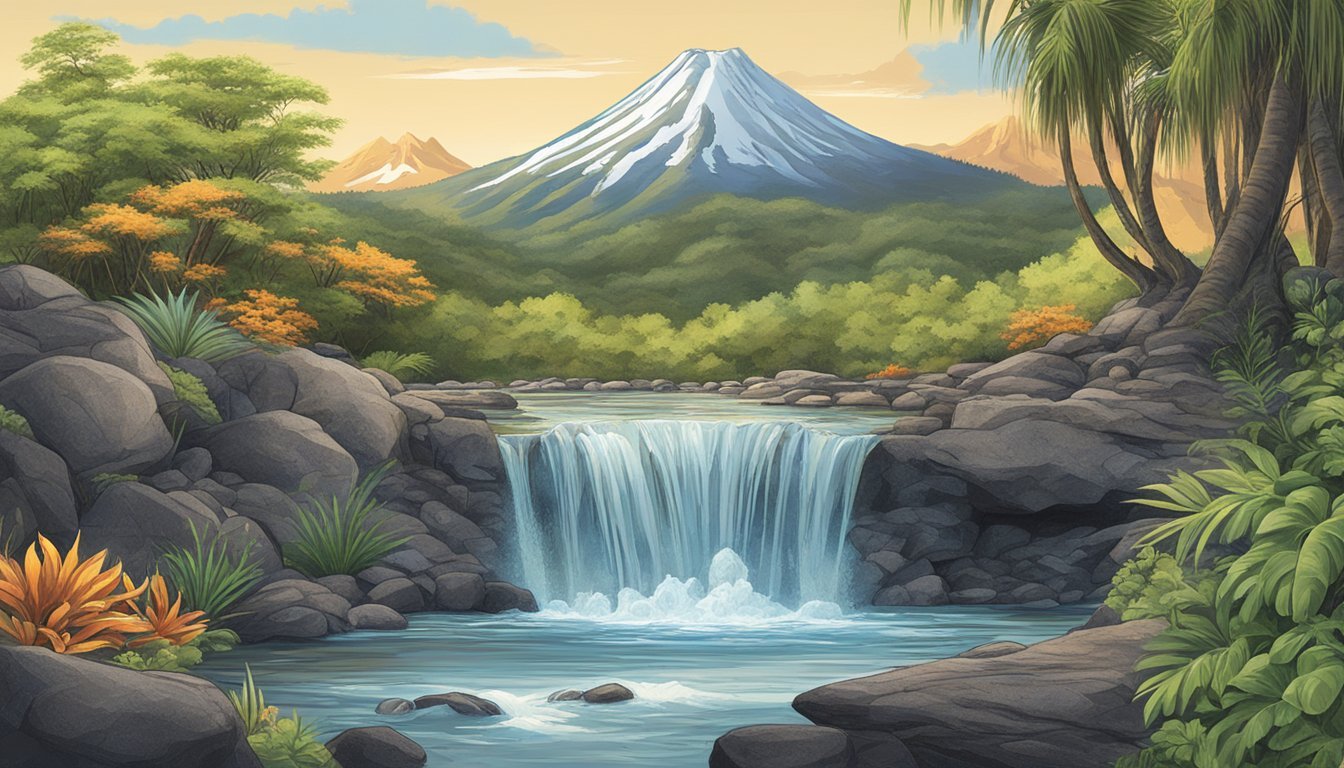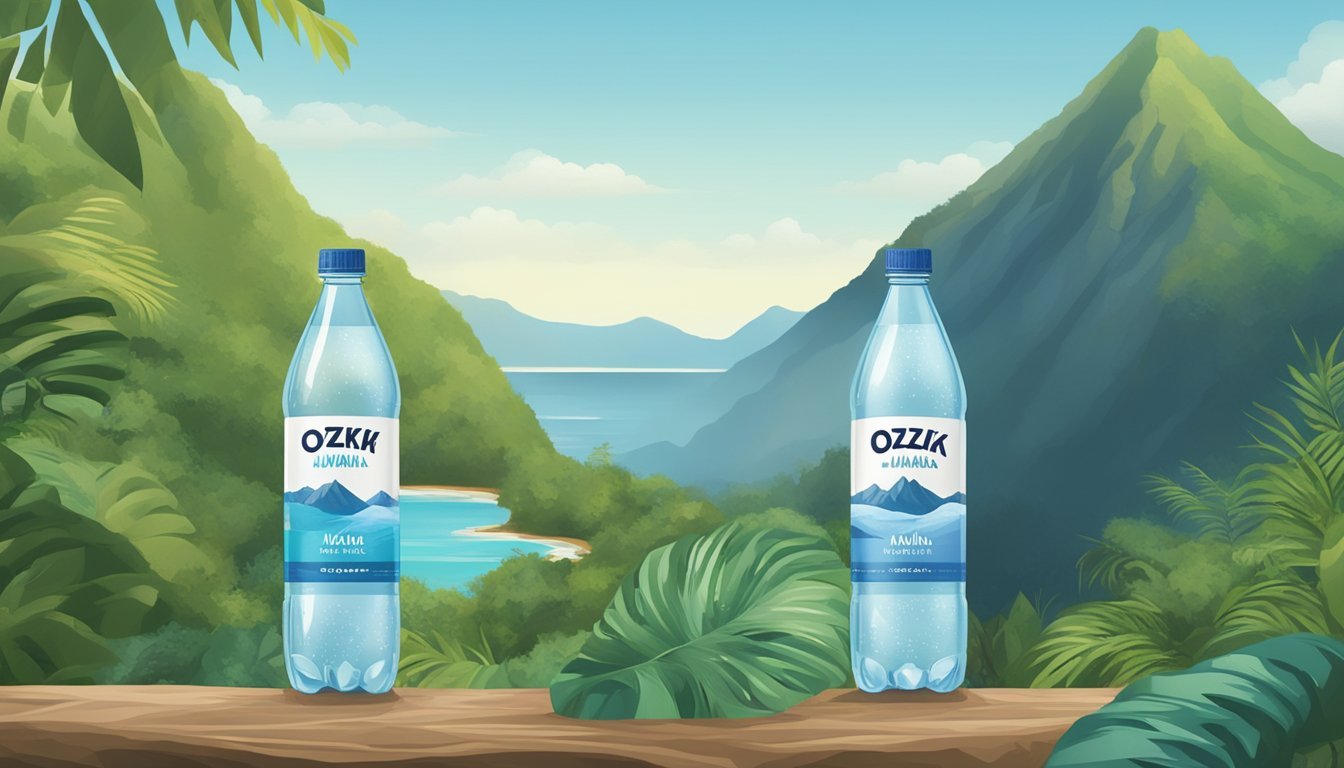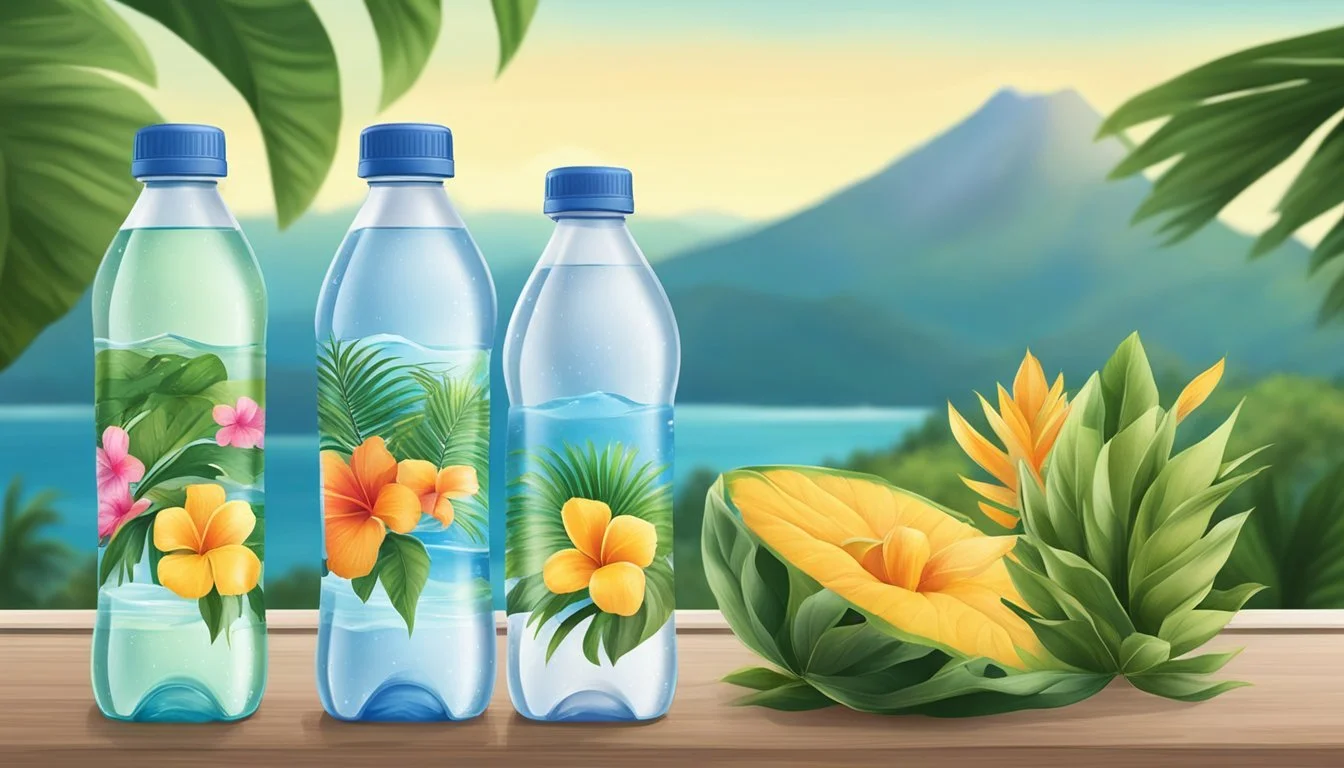Ozarka vs. Hawai’i Volcanic
Bottled Water Comparison Guide
Choosing the right bottled water can be a challenge, especially with so many brands claiming various benefits. Ozarka and Hawai’i Volcanic are two popular options, each with unique selling points that make them stand out. Ozarka sources its water from natural springs in Texas, focusing on providing quality hydration at a reasonable cost.
In contrast, Hawai’i Volcanic taps into the pristine aquifers of Hawaii, offering a unique mineral composition that promises a refreshing taste. When it comes to deciding which is better, it depends largely on personal preference and what you prioritize in bottled water. Some prefer the local, natural spring water of Ozarka, while others are drawn to the exotic origins and distinct flavor profile of Hawai’i Volcanic.
Both brands have their strengths, and understanding these can help consumers make an informed choice. By comparing factors such as taste, purity, and sourcing, readers can determine which bottled water best meets their needs.
The Essence of Ozarka and Hawai’i Volcanic
Ozarka and Hawai'i Volcanic are two prominent bottled water brands, each offering unique attributes based on their origins and natural filtration methods.
Origin and Sourcing
Ozarka sources its water from natural springs located in Texas. These springs are known for their regional purity and are carefully selected to maintain the natural essence of the locale's water. Ozarka prides itself on tapping into local resources, ensuring that the water retains the mineral composition native to the region.
On the other hand, Hawai’i Volcanic water originates from the snowmelt and rain that filter through the volcanic rock of Mauna Loa on the Big Island of Hawai’i. The unique geological formation of this massive shield volcano plays a critical role in the water’s purity and mineral content. Hawai’i Volcanic emphasizes the sustainability of their water harvesting process, sourcing from a family-owned deep well.
Natural Filtration Processes
Ozarka employs a direct collection method, where water from the natural springs undergoes minimal processing to preserve its original mineral balance. This process involves natural filtration through layers of sand and gravel, which helps in maintaining the water’s cleanliness and taste.
Hawai'i Volcanic water benefits from an extensive natural filtration process as it makes its way through porous volcanic rock. This filtration method not only purifies the water but also infuses it with unique minerals, resulting in a slightly alkaline pH. The water travels down Mauna Loa, gaining its distinctive qualities before being collected sustainably.
Through these intricate natural filtration processes and diverse sourcing origins, both Ozarka and Hawai’i Volcanic provide distinct water profiles, ensuring a refreshing and clean taste for their consumers.
Hydration and Health Implications
Both Ozarka and Hawai'i Volcanic offer distinct benefits in terms of hydration and health. Their mineral content, hydration efficiency, and adherence to safety and purity standards play crucial roles in their overall value as bottled water options.
Mineral Content and Benefits
Mineral content in bottled water is essential for overall health.
Ozarka water has a neutral pH level close to 7.0, which supports a balanced dietary pH and general well-being. It contains naturally occurring minerals like calcium and magnesium, which contribute to its taste and potential health benefits.
Hawai'i Volcanic, on the other hand, is slightly alkaline with a pH level typically above 7.5. This alkalinity can help in neutralizing body acidity. Rich in electrolytes, such as potassium and sodium, it supports muscle function and hydration more efficiently.
Hydration Efficiency
Hydration efficiency varies between different brands of bottled water.
Ozarka's neutral pH level ensures effective hydration without significantly altering the body's pH balance. Its mineral content aids in replenishing the body's fluids and essential nutrients, making it a suitable choice for daily hydration.
Hawai'i Volcanic is marketed for its high electrolyte content, which can enhance hydration after physical activities or in hot climates. The slightly alkaline nature may also aid in maintaining hydration levels by reducing acid build-up in the body.
Safety and Purity Standards
Adherence to safety and purity standards is pivotal for bottled water quality.
Ozarka undergoes stringent safety protocols to eliminate contaminants, including potential traces of lead. The water is sourced from natural springs and is processed to meet safety standards, ensuring purity and safety for consumers.
Hawai'i Volcanic emphasizes sustainability alongside purity. The company uses eco-friendly packaging and follows rigorous safety measures to ensure the water remains free from harmful contaminants. Regular testing ensures that Hawai'i Volcanic meets high safety and purity standards, making it a reliable option for health-conscious consumers.
Both brands prioritize consumer safety, but unique selling points like electrolyte content and alkalinity can influence the decision based on personal health needs and lifestyle choices.
Physical and Chemical Properties
This section explores the pH levels, alkalinity, and mineral composition of Ozarka and Hawai’i Volcanic bottled waters. These factors can influence taste and perceived health benefits.
pH Level and Alkalinity
Ozarka Water typically has a pH level that ranges between 7.0 and 8.0. This makes it slightly alkaline and palatable for most consumers. Alkaline water is often sought after for its potential benefits, such as neutralizing acid in the body.
Hawai’i Volcanic Water is known for its higher alkalinity, often recorded around 8.0 to 8.8 on the pH scale. This elevated alkalinity stems from its volcanic filtration process, which naturally infuses the water with minerals and results in a refreshing, smooth taste.
Comparing Mineral Composition
Ozarka sources its water from natural springs in Texas, boasting a range of minerals that includes calcium, magnesium, and sodium. These minerals contribute to its crisp taste and provide essential nutrients that support bodily functions.
Mineral Ozarka (mg/L) Calcium 7.0 Magnesium 3.0 Sodium 5.0 Bicarbonate 20.0
Hawai’i Volcanic benefits from volcanic filtration, which enriches the water with potassium, bicarbonate, silica, and trace minerals. These elements enhance the water’s hydration capabilities and give it a distinct, clean profile.
Mineral Hawai’i Volcanic (mg/L) Potassium 4.0 Bicarbonate 25.0 Silica 10.0
The mineral-rich nature of Hawai’i Volcanic not only aids in hydration but also provides an interesting contrast to the more straightforward mineral profile of Ozarka. Each water offers unique hydration experiences based on their individual compositions.
Taste and Quality Experience
When comparing Ozarka and Hawai’i Volcanic bottled water, the taste and quality are often influenced by their mineral content and the assessments by water sommeliers. This ensures that readers grasp the nuanced differences between the two brands.
The Role of Minerals in Water Taste
The mineral content significantly influences the flavor profile of bottled water. Ozarka, sourced from Texas springs, contains natural minerals that give it a crisp and refreshing taste. Minerals like calcium and magnesium enhance the water's character, making it distinct.
Hawai’i Volcanic, originating from volcanic regions, contains minerals such as silica and potassium. These minerals impart a smooth and slightly sweet flavor, distinguishing it from other brands. Both waters’ unique mineral compositions are essential to their distinct taste experiences.
Professional Assessments by Water Sommeliers
Water sommeliers provide expert evaluations that help highlight the qualities of different bottled waters. Ozarka often receives praise for its clean, straightforward taste. The natural mineral balance appeals to those who prefer a neutral, fresh water experience.
Hawai’i Volcanic is frequently lauded for its unique and nuanced flavor profile. Water sommeliers often note its smooth texture and slightly sweet undertone. These professional assessments emphasize the sophisticated and subtle differences, aiding consumers in making informed choices based on their taste preferences.
Environmental and Sustainable Practices
Ozarka and Hawai’i Volcanic both approach environmental and sustainability practices uniquely. Comparing their strategies, particularly in packaging and waste management, reveals key differences.
Packaging and Environmental Footprint
Ozarka uses plastic bottles that contribute to environmental waste. Their packaging often faces criticism due to its environmental footprint.
Hawai’i Volcanic, on the other hand, opts for glass bottles and recycled plastic. Their glass bottles significantly reduce plastic use, minimizing the environmental impact.
The use of renewable resources in packaging, such as Hawai’i Volcanic's emphasis on sustainability, distinguishes it from Ozarka's plastic bottles.
Recycling and Waste Management
Ozarka's recycling efforts depend heavily on consumer participation, as their plastic bottles require proper recycling to mitigate environmental damage.
Hawai’i Volcanic promotes its recycled plastic and glass packaging, emphasizing the ease of recycling glass and the lower environmental footprint of using recycled materials.
Their proactive approach in promoting and managing waste echoes a stronger commitment to environmental sustainability compared to Ozarka.
Branding, Marketing, and Consumer Preference
Ozarka and Hawai’i Volcanic employ distinct branding strategies and cater to different consumer preferences. Each brand aims to highlight unique features to attract loyal customers.
Market Position and Water Brand Comparison
Ozarka, part of the Nestlé brand family, emphasizes its natural spring water origins. Positioned as a local favorite in the U.S., particularly in Texas, its marketing focuses on regional pride and natural purity.
In contrast, Hawai’i Volcanic targets a premium market segment, emphasizing its volcanic filtration process and rich mineral content. This brand attracts consumers seeking exotic and high-quality water experiences.
Brand Messaging:
Ozarka:
Emphasizes spring water origins
Regional appeal, especially in Texas
Hawai'i Volcanic:
Highlights volcanic filtration
Premium, exotic experience
Competition with Major Brands:
Dasani/Aquafina/Smartwater: Focus on purified and enhanced water.
Nestlé and Poland Spring: Similar natural spring water branding but with a broader market presence.
Arrowhead: Also emphasizes natural mountain spring water but targets a wider consumer base across various U.S. regions.
Consumer preferences often align with lifestyle and regional branding, influencing their choice between local, regional, and premium bottled water brands.
Variants and Options Available
Ozarka and Hawai’i Volcanic offer a variety of bottled water options catering to different preferences and needs. These include both still and sparkling varieties, as well as flavored and enhanced water choices.
Still Versus Sparkling
Ozarka provides primarily still water options. Their natural spring water is known for its crisp and clean taste, sourced locally from Texas springs. It is available in various bottle sizes to suit different consumption needs.
Hawai’i Volcanic, on the other hand, offers both still and sparkling water. Their still water is naturally alkaline, filtered through lava rocks, giving it a unique, smooth taste. The sparkling water option maintains the same high standards, with the added effervescence that many people find refreshing and enjoyable.
Flavored and Enhanced Water Choices
Ozarka keeps it simple with its natural spring water, focusing more on providing pure hydration without added flavors. They don't typically offer flavored versions, which could appeal to those who prefer a straightforward, unaltered water taste.
Hawai’i Volcanic, however, explores enhanced water options. Their water is naturally enriched with minerals and electrolytes, making it a functional choice for those seeking additional health benefits. While specific flavored options are not highlighted, the emphasis on natural enhancements helps the brand stand out for its premium quality.
By focusing on these options, both brands reach different types of consumers, from those preferring natural and pure spring water to those looking for enhanced hydration with added minerals and alkalinity.
Access and Convenience
Ozarka and Hawai'i Volcanic differ significantly in their market presence and packaging options, affecting how easily consumers can purchase and transport these bottled waters.
Availability in Grocery Stores and Retailers
Ozarka water is widely available across the United States, particularly prevalent in grocery stores and major retail chains. It benefits from strong distribution partnerships, making it easy for consumers to find. Conversely, Hawai'i Volcanic may not be as ubiquitously found in traditional retail outlets. It is often available in specialized grocery stores and online retailers, focusing on premium markets. This limited availability might make it harder for consumers to purchase on a regular basis.
Pack Size and Portability
Ozarka offers a range of pack sizes, from single bottles to large multi-packs, enhancing its convenience for various needs. This includes family packs which offer cost-effective hydration solutions for larger groups.
Hawai'i Volcanic tends to focus on premium, smaller-sized options, reflecting its niche market positioning. The packaging usually features aesthetically pleasing designs, positioning it as a luxury item. While appealing, this can limit options for those needing bulk purchases for events or daily use.
Conclusion
Ozarka and Hawai’i Volcanic offer distinct experiences for bottled water enthusiasts.
Ozarka is known for its strong regional loyalty, particularly in Texas and surrounding areas. Sourced from natural springs, it maintains a consistent, clean taste. Its affordability and wide availability make it a practical choice for many consumers.
Hawai’i Volcanic stands out with its unique volcanic filtration process, which adds minerals that contribute to a distinct, mineral-rich taste. As a premium brand, it often markets itself toward those seeking a more exotic and luxurious drinking experience.
Key Differences:
Source and Filtration:
Ozarka: Mountain springs
Hawai’i Volcanic: Volcanic filtration
Taste Profile:
Ozarka: Clean, crisp
Hawai’i Volcanic: Mineral-rich, distinctive
Availability:
Ozarka: Widely available, especially in regional markets
Hawai’i Volcanic: Less commonly found, often in specialty stores
Price Comparison:
Brand Average Price Accessibility Ozarka Affordable High Hawai’i Volcanic Premium Limited
Each brand appeals to different preferences and needs. Those looking for a reliable and budget-friendly option might prefer Ozarka. On the other hand, consumers seeking a unique flavor and don’t mind paying a bit more could be drawn to Hawai’i Volcanic.
Both brands offer quality hydration, but the choice ultimately depends on personal taste, budget, and availability.
More About Ozarka
Mountain Valley Spring Water vs Ozarka: Which Bottled Water is Better?
Ozarka vs Kirkland Signature: Which Bottled Water is Better?
Ozarka vs Richard's Rainwater: Which Bottled Water is Better?
Ozarka vs Whole Foods Italian Still Mineral water: Which Bottled Water is Better?
More About Hawai’i Volcanic
Acqua Pana vs Hawaii Volcanic: Which Bottled Water is Better?
Antipodes vs Hawaii Volcanic: Which Bottled Water is Better?
Aqua Carpatica vs Hawaii Volcanic: Which Bottled Water is Better?
Arrowhead vs Hawaii Volcanic: Which Bottled Water is Better?
Boxed Water vs Hawaii Volcanic: Which Bottled Water is Better?
Castle Rock vs Hawaii Volcanic: Which Bottled Water is Better?
Core Hydration vs Hawaii Volcanic: Which Bottled Water is Better?
Deer Park vs Hawaii Volcanic: Which Bottled Water is Better?
Hawaii Volcanic vs 1907water: Which Bottled Water is Better?
Hawaii Volcanic vs Alkaline88: Which Bottled Water is Better?
Hawaii Volcanic vs Big Chill: Which Bottled Water is Better?
Hawaii Volcanic vs BodyArmor: Which Bottled Water is Better?
Hawaii Volcanic vs Cascade Mountain: Which Bottled Water is Better?
Hawaii Volcanic vs CBD Living: Which Bottled Water is Better?
Hawaii Volcanic vs Crystal Geyser: Which Bottled Water is Better?
Hawaii Volcanic vs Crystal Lake: Which Bottled Water is Better?
Hawaii Volcanic vs Essence pH10: Which Bottled Water is Better?
Hawaii Volcanic vs Kirkland Signature: Which Bottled Water is Better?
Hawaii Volcanic vs Liquid Death: Which Bottled Water is Better?
Hawaii Volcanic vs Open Water: Which Bottled Water is Better?
Hawaii Volcanic vs Proud Source: Which Bottled Water is Better?
Hawaii Volcanic vs Pure Life: Which Bottled Water is Better?
Hawaii Volcanic vs Purely Sedona: Which Bottled Water is Better?
Hawaii Volcanic vs Richard's Rainwater: Which Bottled Water is Better?
Hawaii Volcanic vs Simple Truth: Which Bottled Water is Better?
Hawaii Volcanic vs Talking Rain AQA: Which Bottled Water is Better?
Hawaii Volcanic vs Weird Water: Which Bottled Water is Better?
Hawaii Volcanic vs Whole Foods 365: Which Bottled Water is Better?
Hawaii Volcanic vs Whole Foods Italian Still Mineral water: Which Bottled Water is Better?
Hawaiian Springs vs Hawaii Volcanic: Which Bottled Water is Better?
Ice Mountain vs Hawaii Volcanic: Which Bottled Water is Better?
Icelandic Glacial vs Hawaii Volcanic: Which Bottled Water is Better?
Just Water vs Hawaii Volcanic: Which Bottled Water is Better?
Mountain Valley Spring Water vs Hawaii Volcanic: Which Bottled Water is Better?
Nestle Pure Life vs Hawaii Volcanic: Which Bottled Water is Better?
Poland Spring vs Hawaii Volcanic: Which Bottled Water is Better?
San Pellegrino vs Hawaii Volcanic: Which Bottled Water is Better?
Smartwater vs Hawaii Volcanic: Which Bottled Water is Better?
Solan de Cabras vs Hawaii Volcanic: Which Bottled Water is Better?
Topo Chico vs Hawaii Volcanic: Which Bottled Water is Better?
Zephyrhills vs Hawaii Volcanic: Which Bottled Water is Better?







